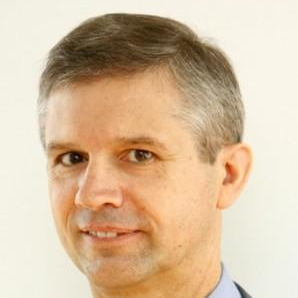Power Electronics in Power Quality
A special issue of Energies (ISSN 1996-1073).
Deadline for manuscript submissions: closed (29 April 2017) | Viewed by 56315
Special Issue Editor
Interests: power electronics; power electronics for electrical power quality; control of switching power converters; power electronics for energy storage and renewables; pulsed power
Special Issue Information
Dear Colleagues,
Power quality is a multidisciplinary and complex field in electrical engineering research. It is concerned with the voltage waveform quality in electrical networks, availability and dependability of electrical power, and quality of electrical services. Recent economic and productivity demands have raised awareness about electrical power quality issues, such as voltage dips, voltage harmonic contents, or voltage swells, namely in case of high renewable energy penetration, electrical market liberalization, and regulation of power systems under the smart grid paradigm.
Power quality disturbances are increasing mainly due to the intermittence of dispersed renewable energy generation, the possible flow of energy from low voltage networks to medium voltage regarding the widespread of micro-generation prosumers, and to the ubiquitous power electronic systems in households, industry, and commercial energy systems. These loads may absorb distorted current waveforms that lead to network voltage distortion. The distorted voltage may further increase the current distortion leading to cumulative distortion of voltage, or to the failure of the switching power supply with the associated down-time costs. Electric vehicles (EV) and their intermittent connection to the grid (G) can also cause flicker and voltage fluctuations. Power quality issues may cause electrical network malfunctions, namely in protection systems and devices, frequency fluctuations, increased network losses, poor usage of power distribution networks, and malfunction/tripping of sensitive devices.
Recently, power quality neighboring research fields like SiC and GaN semiconductor power devices, switching power converters, control theory, signal processing, renewable energy systems, electric and plug-in hybrid vehicles, have experienced fast development, which strongly influenced new procedures and switching power converters to solve power quality issues.
The Special Issue, "Power Electronics in Power Quality", of Energies invites students, engineers, researchers, to contribute original, as well as review material, addressing recent advances on the identification, understanding, quantification, prevention, reduction, and mitigation of power quality issues using switching power converters.
Potential topics include, but are not limited to:
- Unified power quality conditioners
- Active and hybrid power filters
- SiC and GaN based power converters for power quality
- New control techniques for power quality improvement
- Power quality in AC and DC microgrids and smart grids
- Energy storage/management and converters to mitigate sags, interruptions, frequency variations
- Fault ride-trough strategies
- Clean and smart EV chargers (G2V, V2G operation)
- Fault tolerant power electronic systems for the cleanliness and quality of power
- Power quality and renewable energy penetration
- Fault tolerant converters and power quality in shipboard power systems and in all-electric aircrafts
Prof. Dr. Jose Fernando Alves da Silva
Guest Editor
Manuscript Submission Information
Manuscripts should be submitted online at www.mdpi.com by registering and logging in to this website. Once you are registered, click here to go to the submission form. Manuscripts can be submitted until the deadline. All submissions that pass pre-check are peer-reviewed. Accepted papers will be published continuously in the journal (as soon as accepted) and will be listed together on the special issue website. Research articles, review articles as well as short communications are invited. For planned papers, a title and short abstract (about 100 words) can be sent to the Editorial Office for announcement on this website.
Submitted manuscripts should not have been published previously, nor be under consideration for publication elsewhere (except conference proceedings papers). All manuscripts are thoroughly refereed through a single-blind peer-review process. A guide for authors and other relevant information for submission of manuscripts is available on the Instructions for Authors page. Energies is an international peer-reviewed open access semimonthly journal published by MDPI.
Please visit the Instructions for Authors page before submitting a manuscript. The Article Processing Charge (APC) for publication in this open access journal is 2600 CHF (Swiss Francs). Submitted papers should be well formatted and use good English. Authors may use MDPI's English editing service prior to publication or during author revisions.
Keywords
- power quality
- power electronics
- power quality mitigation control techniques
- high-frequency SiC/GaN power converters for power quality
- power quality in microgrids
- smart-grids
- renewable energy penetration
- fault-tolerant converters





